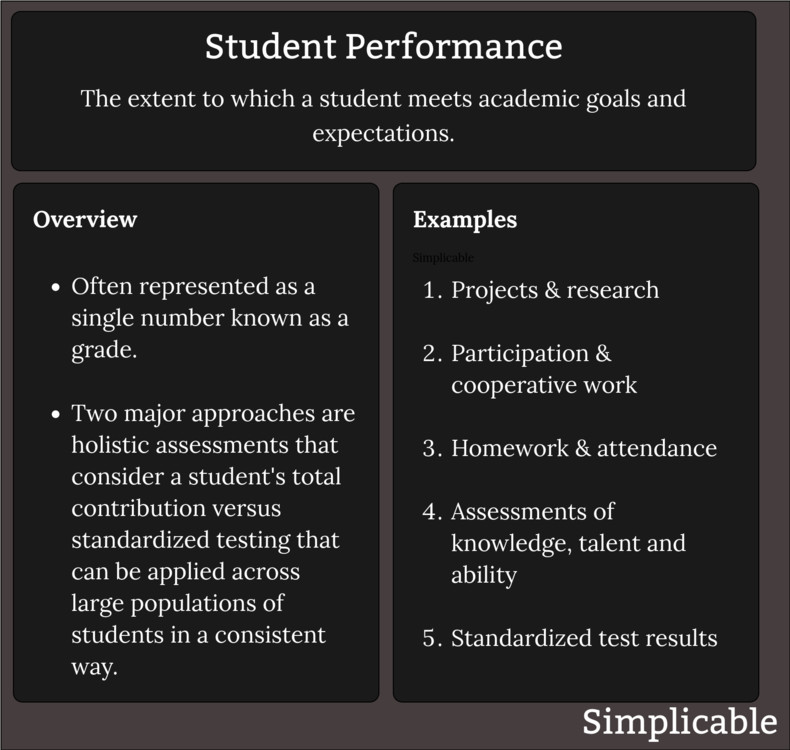
Analytical skills | Artistic talents |
Athletic performance | Attendance and punctuality |
Attention | Class behavior |
Class participation | Communication skills |
Comprehension | Cooperation, collaboration and teamwork |
Creative expression | Critical thinking skills |
Determination | Digital literacy |
Diligence | Empathy and compassion |
Essay writing | Ethical conduct and behavior |
Global awareness | Goal-setting |
Growth, improvement and progress | Homework completion |
Independence | Independent thinking |
Initiative | Insights |
Knowledge | Language skills |
Mastery | Mathematical skills |
Media literacy | Meeting deadlines |
Note-taking skills | Organization skills |
Performing arts talents | Politeness and courtesy |
Presentation skills | Problem-solving ability |
Reading comprehension | Reasoning |
Research skills | Respect and kindness |
Scientific literacy | Self-awareness |
Sportsmanship | Stick-to-itiveness |
Study habits | Talents |
Test and exam scores | Understanding |
Writing proficiency |
Guidelines
The following are basic guidelines for describing student performance.Performance is described in terms of competencies. | Low performance is described in a matter of fact way without being negative. |
Specific examples of what the student did are given such as "actively offered ideas to class discussions." | Effort is made to look for the potential in low performing students such as "appears to understand materials well but doesn't focus to complete in-class activities." |
Positive character traits such as artistic talent can be mentioned. | Low performance can be stated directly without examples such as "disruptive in class." |
Tone and voice demonstrate that you are on every student's side and want to help them improve and realize talents. | Descriptions of high performance often explain the unique contributions and presence of a student. |
Performance descriptions are consistent with grades. | Performance descriptions are consistent with curriculum and communicated program objectives and learning outcomes. |
Overview
Student performance can include a broad range of factors but is often evaluated on a single standardized test or set of tests.















